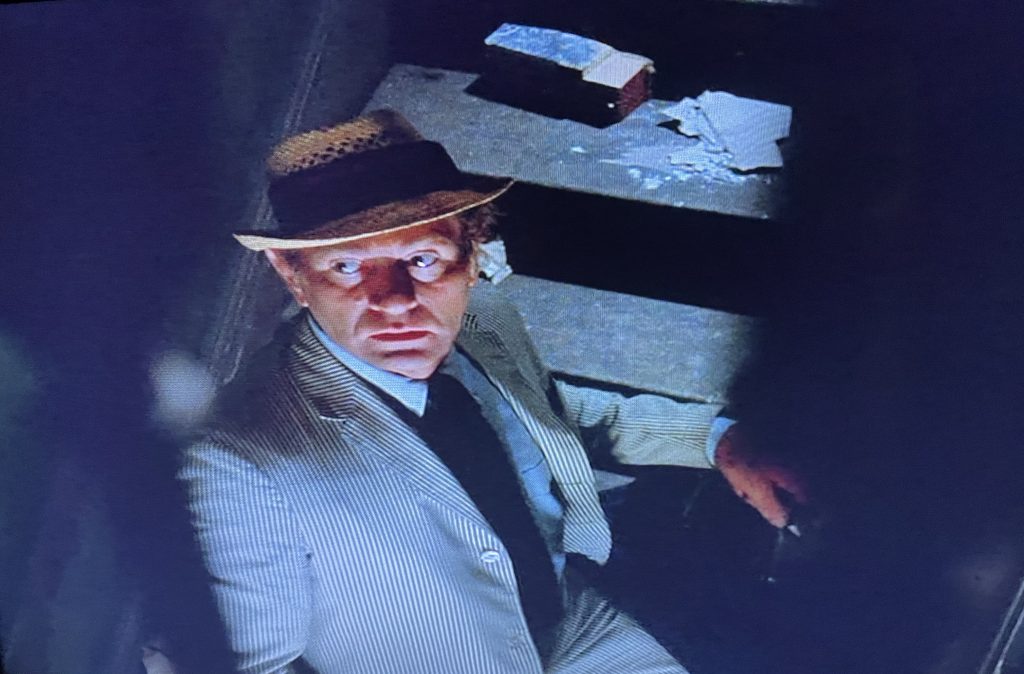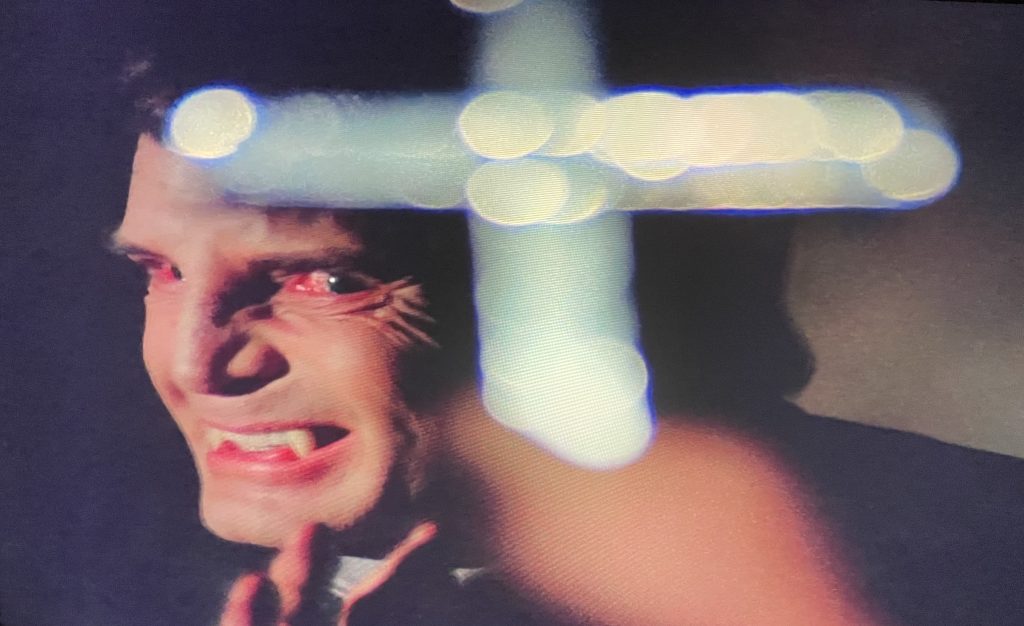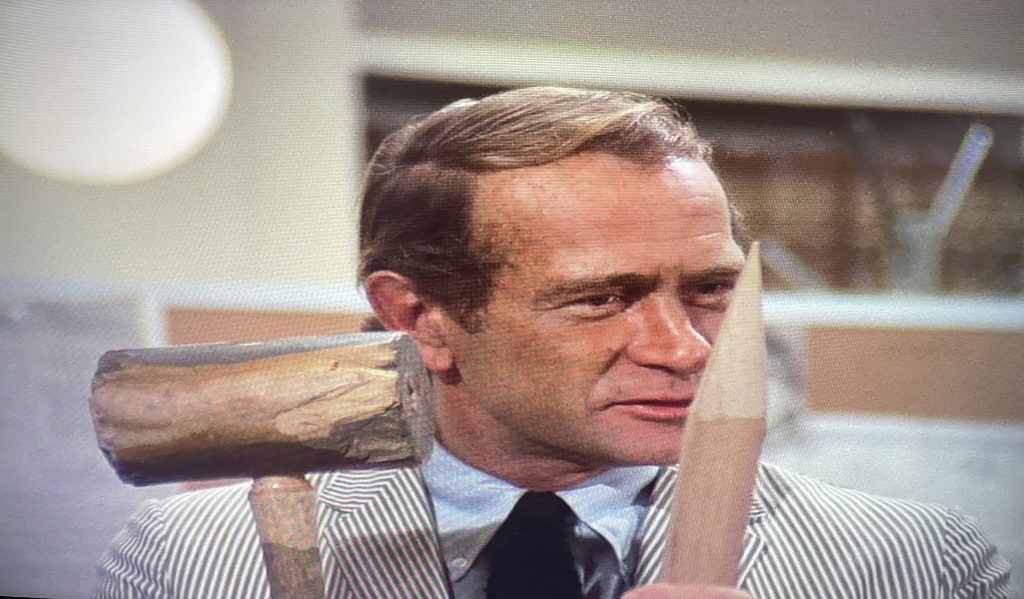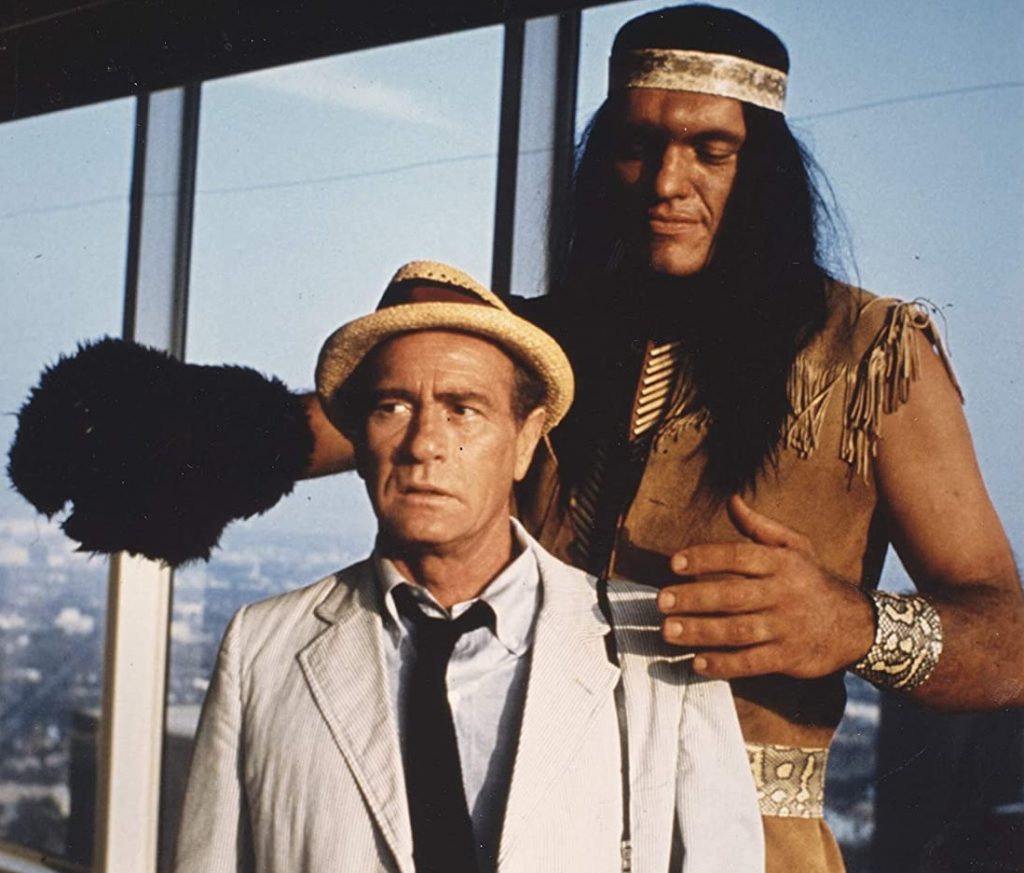Let’s face it creature feature fans. We may love the monsters, but we also enjoy hunting.
Van Helsing, Hellboy, Solomon Kane, and yes, the Scooby Gang are some of the most well-known monster hunters of this particular breed, but at the top of my list is Carl Kolchak.
If it weren’t for this fictional newspaper reporter who fought monsters to save the world on 1970’s television, we wouldn’t have people like Mulder and Scully (X-Files), Buffy (Buffy the vampire slayer) and the Winchester brothers (supernatural).
Kolchak debuted in the TV movie in 1972 The night owl and is immortalized as a pop culture icon in his signature straw hat, seersucker suit and white sneakers.
That was 50 years ago, but new books, graphic novels, and home video releases continue to be made; Fan art and watch parties are shared via Facebook groups dedicated to Kolchak. Pilgrimages are still made to the Old Colony Building in Chicago, which was the exterior of Kolchak’s office, the International News Service.
One reason for the continued interest is that Kolchak reminds fans of their childhood, said Gregg Davis, founder of the Kolchak: The Night Stalker Facebook group. “So many have memories of watching with a parent and being scared – it was the first truly scary show many members have ever seen. Those memories are burned into their minds and it’s exciting to find others who share those memories,” said Davis, who founded his group in 2005, which now has 29,000 members.
Played by the captivating Darren McGavin, Kolchak fought more than 20 different creatures, all in the name of a good story. There were the “usuals” like vampires, werewolves, and witches, along with creepy creatures like an energy-eating creature, invisible aliens, a headless motorcyclist, succubus, and ape-men.
But the focus in two TV movies and a 20-episode series was Kolchak, not the monsters, and that “solidified the character of Kolchak in television history,” said Kendall R. Phillips, author of the new book Kolchak: The Night Stalker”, part of the Milestones television series by Wayne State University Press.
“It used to be the focus on the victim or the monster, or jumping back and forth between the two. If you had a monster hunter like Van Helsing, he showed up in the third act,” Phillips said, adding that the focus on Kolchak “changed the face of horror.”
And let’s face it, that was quite an achievement for a character who learned how to hunt monsters on the job. Luckily he was a damn good reporter. Though unfamiliar with science, folklore, or mythology, he handled expertly difficult questions that usually got him into trouble but also provided answers.
“I ask a lot of questions; no one seems to like that – cops, voodooists or politicians,” says Kolchak in The zombie.
He was stubborn and stubborn, sticking his nose where it didn’t belong. He never let out a good story, not even for a ticket to see the Cubs in the World Series. And he was willing to explore the most incredible ways to solve murders and investigate strange phenomena.

Like the modern horror character who goes to the dark basement, Kolchak always went where he shouldn’t – to an old house, an abandoned lot, the sewers or the forest. Stumbling and stumbling, he knocked things over and made noise, drawing dangerous attention. If there was a closet or a door, Kolchak will surely resist it and throw himself into the deadly arms of the horror that awaits him.
He was a scared cat who would jump for his own benefit, but he was also foolishly brave. My favorite moment, if you can call it a favorite moment because it’s so scary, is the scene where an obviously terrified Kolchak crawls into a hearse to “kill” a zombie by putting sugar in his mouth and lips sews up (The zombie).
He’s usually out of his league, and that perennial underdog status is another aspect of his enduring appeal, said Davis of the Kolchak: The Night Stalker Facebook group.
“Kolchak always fights back and always triumphs, even when nobody ever believes him,” Davis said. “His sense of humor makes him particularly likeable. A lot of great writers and directors were part of the show, and it was generally a cut above other TV shows of the time.”
During the reporting, Kolchak discovered such fantastic things that the authorities made sure that his stories never saw the light of day. They tore film from his camera, tape from his recorder and confiscated photos from his office. Stories were pulled and replaced with safe, sanitized versions of “truth.”

Unable to share his stories with the readers of the International News Service, he told them to television viewers in the always entertaining and mood-lifting monologues that opened and ended each story.
“Chicago was struck by a terror so frightening and fascinating it has become one of the great mysteries of all time. It has been the fictional subject of novels, plays, films, even an opera. Well, here are the real facts.” He tells us in the opening of The Pickerthe first episode of the TV series.
He knew how to get our attention and we gladly gave it to him. It’s no wonder Chris Carter was so inspired by seeing Kolchak as a child that he created his own seekers of truth X-Files.
The story of Kolchak
Carl Kolchak was introduced The Kolchak Papers, an unpublished novel by Jeff Rice, who was a reporter for the Las Vegas Sun. Although it didn’t garner publishers’ interest, ABC Studios picked it up and turned it into a TV movie The night owl written by Richard Matheson for producer Dan Curtis.
In the film, Kolchak works for the International News Service in Las Vegas and, as is his way, complains about his latest assignment, a “two-day-old, third-rate murder.”
It quickly becomes his #1 priority when he learns the tantalizing news that the victims have run out of blood. When the suspect is identified as a 70-year-old man named Janos Skorzeny (played by Barry Atwater) with superhuman strength and a body capable of withstanding bullets at close range, Kolchak’s Spidey feeling rises.
It’s not long before he’s saying the “V” word or pulling out a hammer and stake and begging the police authorities to “under the
assumption that he’s a vampire.”
“Are you suggesting we hit Skorzeny in the chest with one of those?” Kolchak is asked.
“No, in his heart,” he says, speaking the language of horror fans.

The night owl was a smashing but unexpected success, becoming the top-rated TV movie at the time. (It’s puzzling that anyone would be surprised at a collaboration between Matheson, who wrote classics like the vampire/zombie novel I am Legend and many of the most memorable episodes of The Twilight Zoneand Curtis, the man in charge dark shadowswould be a success.)
A sequel was quickly ordered, and The night strangler followed in 1973. Kolchak, banned from Las Vegas, was now in Seattle, where his reputation – and his anger – followed. Young female murder victims are found with a needle punctured at the base of their skulls and pieces of rotted flesh on their necks. With some research and old newspapers, Kolchak finds that similar murders have taken place every 21 years for a century. A trip to Seattle’s fascinating but spooky underground city is the next stop on Kolchak’s agenda.
The night strangler was another success that prompted ABC to order a series. Kolchak: The Nightstalker premiered Sept. 13, 1974 with
The Picker and a serial killer who, you might have guessed, bears unnerving resemblances to Jack the Ripper.
From then on, episodes were fun with talk of a man with x-ray eyes, an elixir of life, old frozen cells, cursed pills, and oozing substances.
But it also followed a monster-of-the-week format, one reason star Darren McGavin was so unhappy that he left the series before it completed a full season. But it still left its mark.
“For a show that didn’t even last an entire season, it made an indelible mark on American popular culture,” Phillips said. “People know that iconic straw hat and seersucker suit. When he died, virtually every obituary mentioned two of his roles: the father in “Christmas Story” and Kolchak. Kolchak captured a large part of the American imagination – and it continues to sustain our imagination.”

The guest stars
The Kolchak movies and TV series have all had great supporting cast, led by Simon Oakland as Kolchak’s beleaguered and stormy boss, Tony Vincenzo.
The list of frustrated and alienated police captains Kolchak was played by the likes of Keenan Wynn, Charles Aidman, John Marley and Larry Linville.
He also maintained his reporting sources well. A favorite was Wally Cox, perfectly cast as the mousy explorer Titus Berry. I lose myself in their childish excitement as they discover the pattern of a killer who strikes every 21 years The night strangler. “Shall we try 1889?” asks Titus.
The villains included Richard Kiel, who played various creatures The Spanish Moss Murders and bad medicine, Soap star Eric Braeden was the title character in The werewolf and Cathy Lee Crosby as a lovely woman who has preserved her youthful beauty at the expense of others The youth killer.
Other familiar faces (and voices) include J. Pat O’Malley, Alice Ghostley, Julie Adams, Jim Backus, Erik Estrada, and the wonderful Ruth McDevitt as mystery maker and news agency advice columnist, Miss Emily, who had a very sweet relationship with Kolchak.
In the episode, look for special guest star Kathie Brown, McGavin’s wife Post.
– Toni Ruberto for Classic Movie Hub
You can read all of Toni’s Monsters and Matinees articles here.
Toni Ruberto, born and raised in Buffalo, NY, is an editor and writer at The Buffalo News. She shares her love of classic movies on her blog, Watching Forever, and is a member of the Classic Movie Blog Association. Toni was the President of the former Buffalo chapter of TCM Backlot and now runs the Buffalo Classic Movie Buffs spin-off group. She’s proud to have spotlighted Buffalo and its glorious old movie palaces as the inaugural winner of the TCM in Your Hometown competition. You can find Toni on Twitter at @toniruberto.









